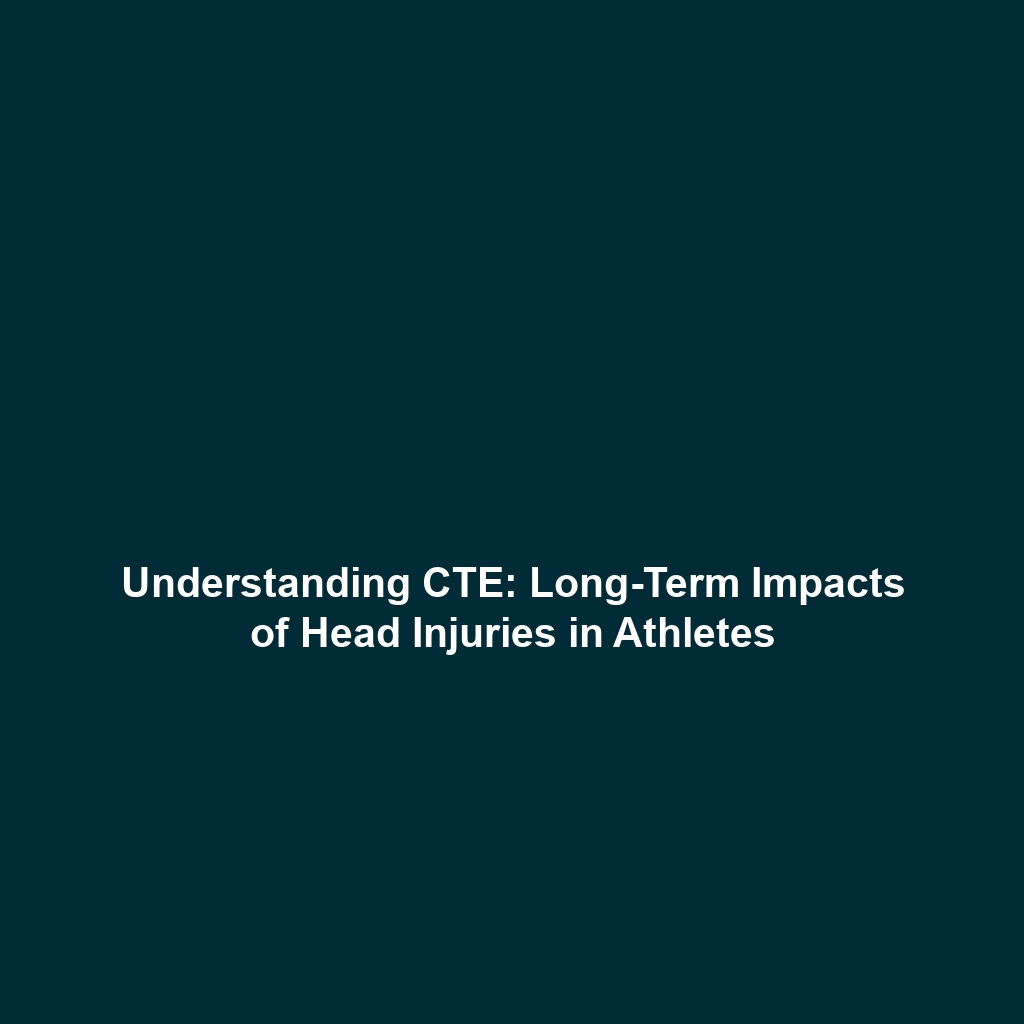Long-term Effects: Chronic Traumatic Encephalopathy (CTE) in Athletes and Military Personnel
Introduction
Chronic Traumatic Encephalopathy (CTE) has emerged as a critical health concern linked to repeated head injuries, particularly in athletes and military personnel. This neurodegenerative disease, characterized by the accumulation of tau protein, poses significant challenges not only to the individuals affected but also to sports and military organizations. Understanding the biomechanics behind head trauma and its long-term effects is essential for developing preventive measures and therapeutic approaches.
Key Concepts
The Pathophysiology of CTE
CTE develops as a result of repeated traumatic brain injuries (TBIs) that lead to lasting changes in brain structure and function. Key concepts related to CTE include:
- Neurodegeneration: Characterized by loss of neurons and brain tissue, linked to cognitive decline.
- Biomechanical forces: Understanding how the mechanics of impacts contribute to brain injuries.
- Symptomology: Symptoms range from headaches and mood disturbances to dementia.
Biomechanical Factors
Biomechanics plays a crucial role in analyzing how forces exerted during impacts contribute to TBIs. High-impact sports such as football and boxing, as well as military training environments, necessitate a biomechanical understanding to mitigate risks associated with CTE.
Applications and Real-World Uses
The study of CTE and its biomechanics has led to several practical applications:
- Protective Equipment: Development of advanced helmets designed to reduce impact forces.
- Training Protocols: Implementation of techniques to reduce head trauma risk in sports and military environments.
- Policy Changes: Formulation of new guidelines for return-to-play protocols following head injuries.
Current Challenges
Despite advancements, several challenges persist in understanding CTE:
- Diagnosis: There is no definitive clinical test for CTE, complicating early detection.
- Research Funding: Limited financial resources can hinder comprehensive long-term studies.
- Athlete Privacy: Ethical concerns around studying former athletes, with respect to their health information.
Future Research and Innovations
The future of CTE research is poised for exciting innovations, including:
- Biomarker Development: Identifying biological markers that can predict CTE onset.
- Advanced Imaging Techniques: Utilization of MRI and PET scans for better diagnosis.
- Neuroprotective Strategies: Exploring drugs that may mitigate the effects of neuroinflammation from head injuries.
Conclusion
Chronic Traumatic Encephalopathy remains a significant concern in the realms of biomechanics, particularly concerning athletes and military personnel. Continuous research is crucial for understanding its long-term effects and developing effective preventive measures. For further reading, explore topics such as current research on CTE and innovative protective measures in sports.
